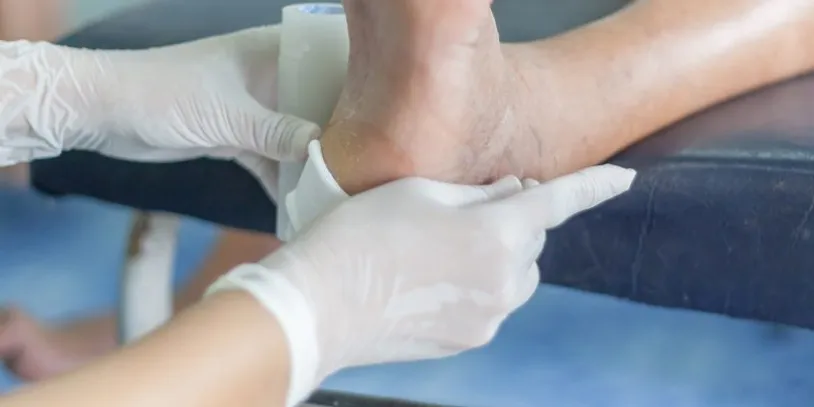Open wound dressing: everything you need to know

What is an open wound dressing?
An open wound dressing is a type of material that is used to cover an open wound. It can be a sterile pad, gauze, or clear plastic film. The dressing is often held in place with tape.
A wound dressing is a material that covers an open wound and protects it from outside contamination, while also preventing the loss of tissue or fluids. An open wound dressing will usually cover the whole area of the injury. It can come in many different shapes or sizes depending on the location and size of the injury.
The shape of an open wound dressing varies depending on where it’s being used – for example, whether it’s being used to cover a small cut on one’s finger or a large gash on one’s leg.
Types of open wound dressings
Open wounds are a common problem that is found in many different industries and settings and can often lead to infection if not properly cared for.
The most common types of open wounds are the following:
- Bedsore
- Acute Traumatic Wound
- Venous Stasis Ulcer
- Chronic Wounds
The types of open wound dressings that can be used for these open wounds are as follows:
- Alginate Dressing
- Hydrocolloid Dressing
- Hydrogel Dressing
- Silver Dressing
How do open wound dressings work?
Open wound dressings are used to stop bleeding and protect the wound from bacterial infection.
A common misconception is that open wounds are bad and should be avoided at all costs. The truth is, open wounds can be managed with care and attention to detail. That’s why there are many different types of wound dressings available on the market today. Let’s take a closer look at some of the most popular options.
Different types of wounds require different treatments, but one thing they all have in common is that they need protection from bacteria to heal properly. This means that each type of dressing has its own unique properties to offer in terms of giving the wound the best chance for healing while minimizing pain, infection, and scarring when possible.
Different uses for dressings in healthcare settings
Dressings play a vital role in the healthcare setting. They can be used for a wide range of purposes, from wound care to infection prevention.
There are two main types of dressings- absorbent and occlusive. These differ in how they work and what their uses are. For example, absorbent dressings are made from gauze and cotton that will keep the wound moist to help it heal faster. While occlusive dressings act as a barrier to keep fluids away from the wound bed and out of the air where bacteria may grow.
Medical professionals need to know which type of dressing is appropriate for a given situation because it could make all the difference between a quick recovery or pus-spewing infection.
Dressing types – what to consider when choosing one
There are many factors to consider when selecting the right type of dress. Whether you are planning to wear it for an interview, a wedding, or a special occasion such as a birthday party. Dresses can be formal or casual, and they come in so many different colors and styles that it becomes difficult to make the right choice.
Dresses are not just about what they look like: they are also about how they fit. If you want your dress to be flattering, it must fit you well without being too tight or too loose around the waist, hips, or any other area on your body.
You should also consider if the fabric is appropriate for the event you will be attending and if it will keep you comfortable in warmer weather. For example, if you want to wear your ???
Important tips for when you’re changing a wound dressing
Changing even a standard wound dressing can be a cumbersome task. To ensure that the procedure is completed correctly, it is important to follow the proper protocol for changing a dressing. These instructions typically include recording the date of the change, noting any other dressings that have been used, inspecting the area of skin where the dressing will be applied to ensure there are no signs of infection or foul odor, and properly cleaning any soiled areas on the skin before applying.
How to change an open wound dressing
The first step is to clean the skin with soap and water or alcohol-based skin preparation. Next, use sterile gloves to remove the old dressing and bandages. The last step is applying the new dressing. When doing this last step it is important not to reuse any of the old dressings because they no longer have any antiseptic properties and can cause infections in open wounds.
